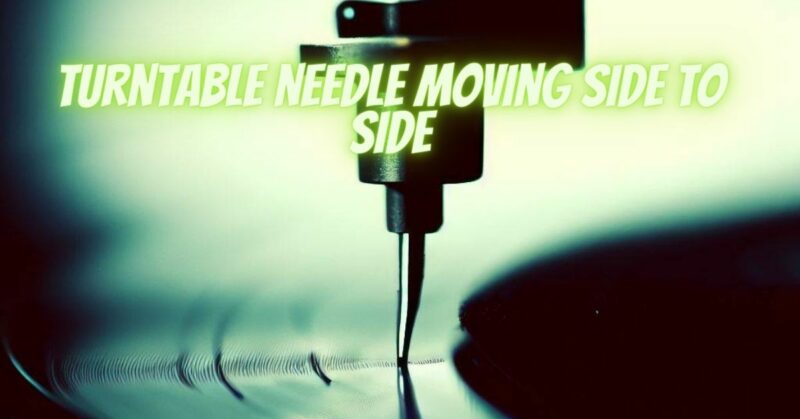The soothing crackle of vinyl records can transport us to a bygone era of pure musical bliss. However, when the turntable needle starts swaying from side to side instead of gliding smoothly, it can disrupt the listening experience. In this article, we’ll explore the potential causes behind the sideways movement of a turntable needle and provide you with practical solutions to address this issue effectively.
- Misalignment: Bringing Harmony Back One of the primary reasons for the sideways movement of a turntable needle is misalignment. If the cartridge or stylus is not correctly positioned within the tonearm, it can cause the needle to veer off its intended path. To rectify this, consult your turntable’s manual or seek professional assistance to ensure proper alignment. Correct alignment will restore the needle’s stability and ensure accurate tracking along the record grooves.
- Tracking Force: Finding the Perfect Balance Incorrect tracking force can also contribute to needle movement. Insufficient or excessive tracking force can cause the needle to sway side to side instead of maintaining consistent contact with the record surface. Check the manufacturer’s instructions or consult an expert to determine the recommended tracking force for your cartridge. Make any necessary adjustments to achieve the optimal balance, allowing the needle to track smoothly.
- Stylus Wear: Rejuvenating the Listening Experience A worn-out or damaged stylus can lead to erratic needle movement. Over time, the stylus tip can wear down, affecting its ability to navigate the record grooves accurately. If you notice excessive lateral movement, inspect the stylus for signs of wear or damage. If necessary, replace the stylus with a new one compatible with your cartridge model. A fresh stylus will restore the needle’s stability and enhance the overall sound quality.
- Vertical Tracking Angle (VTA): Achieving Harmonic Alignment The Vertical Tracking Angle, or VTA, refers to the angle at which the needle meets the record’s surface. Incorrect VTA can cause lateral movement as the needle struggles to maintain proper alignment. Consult your turntable’s manual or seek expert advice on adjusting the VTA. By finding the correct angle, you can ensure that the needle glides smoothly across the grooves, minimizing any sideways movement.
- Mechanical Issues: Professional Intervention In some instances, persistent needle movement from side to side may indicate mechanical issues within the turntable. Problems such as a damaged tonearm or faulty bearings can disrupt the needle’s stability. If troubleshooting steps haven’t resolved the issue, it’s advisable to seek professional assistance. An experienced technician can diagnose and repair any mechanical problems, restoring your turntable’s functionality.
Conclusion:
The mesmerizing allure of vinyl records lies in their analog warmth and immersive sound. When the turntable needle starts moving sideways, it can detract from the listening experience. However, by addressing potential causes such as misalignment, tracking force, stylus wear, and VTA, you can often rectify the issue on your own. Should the problem persist, it’s prudent to consult a professional technician for a thorough assessment. With proper attention and care, you can bring back the stable, smooth tracking of the needle, allowing you to savor the magic of vinyl music once again.

